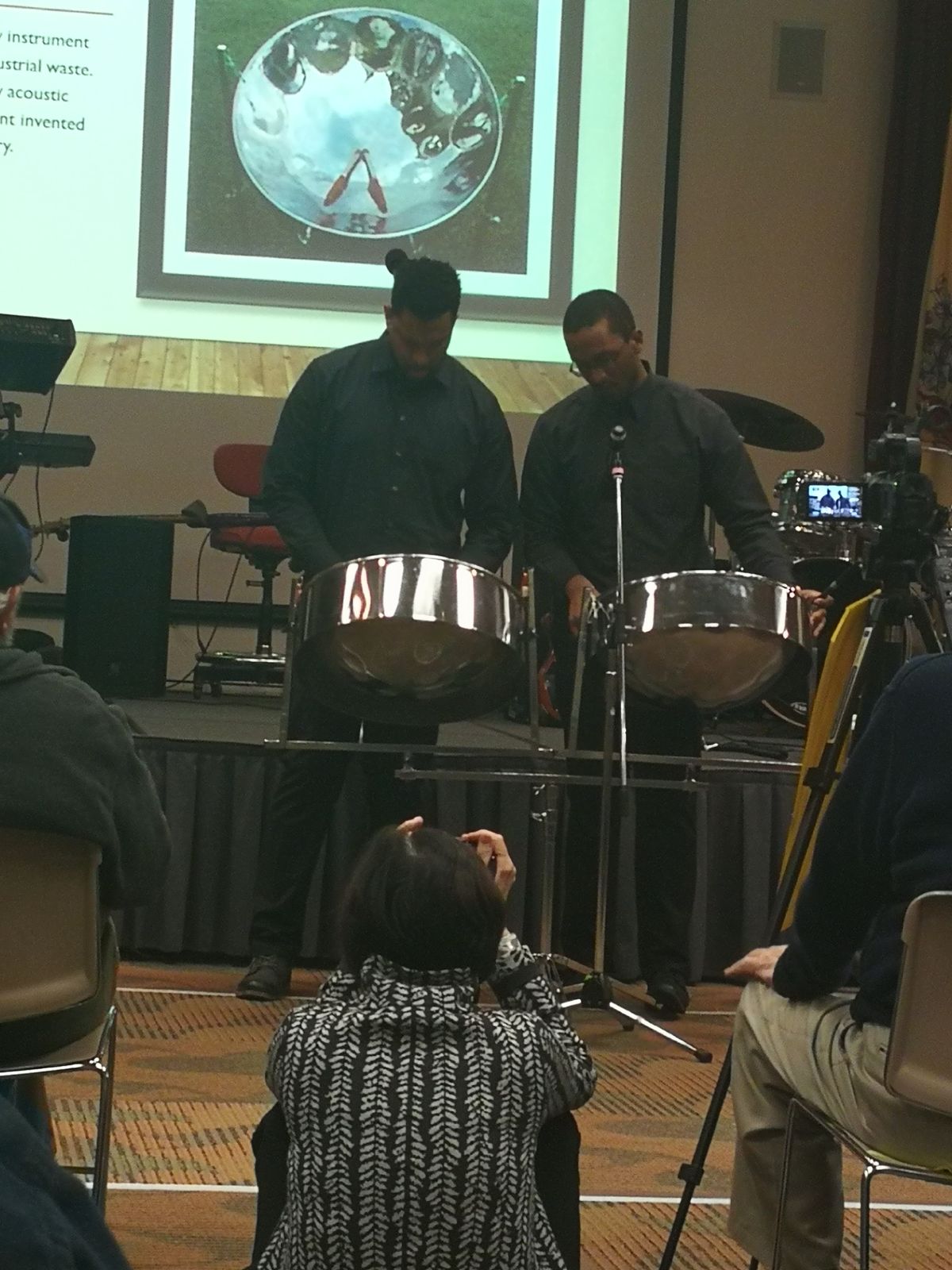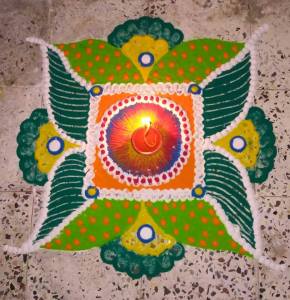
It is my last week in Suddlersville Maryland and I am chatting with Mary Godfrey. ‘I hope you got your sweater,’ she says as we head out to church. ‘I always carry mine because sometimes the air conditioning is too cold and I like it warm!’ I burst out laughing, ‘Same here,’ and hurry back to the house to grab a sweater. Although I appreciate the beauty of winter wonderland and winter fashion; I like it warm too, naturally, as I am from the tropics!
Mary Godfrey is a petite Caucasian lady in her 80’s and still active. She drives herself around most of the time and works on the Godfrey’s farm in Maryland which has been their family enterprise over some decades now.
Mary picks me up for church whenever we have service at St Luke’s Episcopal, Church hill. Whenever I travel for some time, I love to attend a local church. It’s one of the easiest ways to feel at home as a Christian. It also gives me the opportunity to appreciate how large and diverse the body of Christ (the church) is.
On this bright May Sunday afternoon, we go to the farm’s seasonal grocery where I get to buy some vegetables for my last week in town. This had been my home for 3 months as I worked on a project with a whole house to myself, courtesy of a dear friend. Later, we sit down where I get to enjoy a treat of freshly made Godfrey’s farm ice cream as I have a chat with Mary Godfrey.

Suddlersville is a quiet little town located in Maryland. It’s one of those towns where everybody seems to know or be aware of each other. As we ‘take the ice cream flight’, we chat about different things going on in our world today. Mary Godfrey has been a member of St Luke’s Episcopal Church for most of her life. She gives me insight about how folk from across the river would come in boats to attend service at St Luke’s church, centuries back. That’s hard to tell because presently the church is somewhat fenced off from the river across. St Luke’s Episcopal church is currently composed of mostly elderly members and it is a delight when a new face or younger people join Church. I can imagine it was interesting for them that an African female seemingly appeared from nowhere to join in the fellowship. As the Covid pandemic raged on, in person services had ceased until earlier in the year when vaccinations began. When Spring set in, it was allowed to have in person services with the use of masks.
On my first Sunday in attendance at the church I stare across the pews in wonder at the contrast. I am used to having a crowd of reasonable, large and very large sizes attending church services most of my life in Kenya, East Africa. It hasn’t been any different for most of my stay in the US, on the East Coast but not in this little town. There’s more…
Mary Godfrey lets me know that this particular congregation has been through worse times ….There was a time when the church had been shut and was used as a horse stable, she says. Presently, there’s just enough finances to keep it going with lights and other basic amenities. On this particular Sunday, those in attendance are delighted to have a young girl in her teens- a visiting granddaughter to someone – playing the organ.
It is at St Andrew’s church, which is part of St Luke’s Episcopal that I met Loretta Collins, the vicar. She gave me a warm welcome and I got to enjoy services over a few weeks. Loretta Collins is the vicar of St Luke’s Episcopal Church which consists of two locations, Church Hill, the main location I have been speaking about; and the smaller St Andrew’s Chapel building which was a walking distance from where I was residing.

Over the weeks I did feel warmer in the midst of brethren and made some friends among them like Sandy Hartman, a widow in her seventies as well, who picked me up for church when I didn’t ride with Mary Godfrey.
My weekends were filled with such fun as my host Dezah Cruz, who lives in nearby New Jersey, drove into town with her large African American family and we went on drives, shopped and ate together with warm conversations. Dezah Cruz who loves African music said she felt the rhythm in Nathaniel Bassey’s song, Halleluya Amen. Dekyah, her sister, would actually get up to dance! As I concluded my visit, Loretta Collins acceded to my request for an interview and shed some light into the church at Suddlersville as well as her personal journey. Here is the full interview below:
Who is Loretta Collins?
I was born into a Mennonite (Anabaptist) family in Lancaster County, Pennsylvania. Church was a focal point in our family for not only worship, but also social life. Church and faith were such an integral part of life that I never considered not being a part of it. College and graduate school led to a 30-year career as a school psychologist in public schools. Throughout this time, I participated in lay ministries in churches.
Marriage to Patrick, who grew up in the Roman Catholic church, brought a new challenge to us. We resolved to find a church family where we could worship together. After a few years and visits to various churches, we found a home in the Episcopal Church. My experiences there, including a visit to a diaconal ordination, renewed my call to use my gifts of leadership in service in the church. I was ordained as a deacon in the Episcopal Church in October 2010 in the Episcopal Diocese of Central Pennsylvania.
Tell me the unique aspects of Anglican /Episcopal tradition of worship within the Christian faith.
St. Luke’s Parish is part of the Episcopal Church USA and is a member of the larger worldwide Anglican communion. We use the 1979 Book of Common Prayer of the Episcopal Church as the structure for our liturgy.
Worship in the Episcopal Church is about ‘Call and Response’ and ‘Practice for Life’. Each time we gather, we hear God’s word (the Call) and we read psalms, sing hymns, pray for others, confess our short-comings and forgive each other (the Response). In our liturgy, when we respond, we are practicing for how we are to live our lives. We should read from the Bible every day; we should offer thanks to God on a regular basis; we should pray for the needs of others and we should work for justice. Worship is the key to living as a follower of Jesus because it opens the door to experiencing the world and life in a way that focuses on loving God and loving each other.
Please give me a brief history on how you felt the call to become vicar at St Luke’s.
My husband Patrick, a priest in the Episcopal Church, was called to serve on the eastern shore of Maryland in the Diocese of Easton. We moved here about five years ago. I met with our Bishop, The Rt. Rev. Santosh Marray, to discuss where I might serve. It was Bishop Marray’s decision to invite me to serve as the vicar at St. Andrew’s Episcopal Chapel and St Luke’s Episcopal Church. I have now been serving there for almost four years.
Tell me more about St Luke’s Parish.
St. Andrew’s Chapel, where we first met, along with St. Luke’s Church, make up St. Luke’s Parish. We are one congregation, two houses of worship. St. Luke’s Church is located in Church Hill, Maryland; St. Andrew’s Chapel is located about 10 miles away in Sudlersville, Maryland. St. Andrew’s has traditionally been primarily a farming community. That has changed over the last 50 years as farms are larger and fewer. The church community is made up of persons of various occupations.
St. Andrew’s Episcopal Chapel is a historic Episcopal chapel located in Queen Anne’s County, Maryland, built as a chapel of ease for St. Luke’s Church which had been established earlier in 1728. It was listed on the National Register of Historic Places in 1984.
The Chapel was built as a small Carpenter Gothic-style structure, constructed in 1878. It is divided into two principal parts: a large rectangular sanctuary with a steeply pitched gable roof, and a slightly smaller but similarly proportioned chancel. The entry features a wide Gothic-arched double doorway with a steep gable roof. The sanctuary has stained glass windows on the first floor, and a circular stained glass rose window in the upper gable.
Do you think the church in America is in decline?
That is a very big question. There are folks better trained than I who study church history and who follow the data and could answer this question more accurately. My humble opinion is that to answer that question we have to define church. If we define church as bodies of believers who identify as Episcopalians, Methodists, Presbyterians, Baptists, and so on; in the United States of America, then those numbers as a whole are declining. If we define church as followers of Christ around the world, then there is no formal way to track that information. There is information that suggests that the body of Christ is growing and thriving around the world, perhaps just not in the traditional way we have thought about church in the last few centuries.
Considering that your congregation consists of older citizens with established families, do you think something could’ve gone wrong in passing the baton to the younger generation in cases such as this?
There are many faithful church leaders who ponder that question. I do not know of anyone who has the answer to that. I imagine the answer is multi-layered and complex. Perhaps the Protestant denominations became too complacent, too comfortable in society over the last decades. Perhaps we have not stayed true enough to the way of Jesus. Theologian Phyllis Tickle has an interesting theory about this. She has studied church history and suggests that about every 500 years the Christian church has gone through a time of challenge and questioning. About 500 years ago was the Reformation and now, about 500 years later, the church is again in a time of challenge. It is important that we don’t lose hope but continue to teach Jesus’ way of love.
What are your hopes and dreams in your calling?
In the Episcopal Church, it is the Bishop who plans calls for deacons, based on where the needs are. I am enjoying my work with the folks at St. Luke’s Parish. The Bishop will decide when he believes it is time for me to share my gifts elsewhere. In the meantime, I hope to continue to be able to offer some hope and inspiration and to encourage each person to demonstrate the love and healing of Christ in their corner of the world.
What are St Andrew’s hopes and dreams as a parish and congregation?
The congregation of St. Andrew’s, as part of St. Luke’s Parish, has memories of a full church. Many of the older members fondly remember full pews and children’s programs and Sunday School. One of their dreams is to increase membership again and in doing so, show the love of Christ and offer hope in our towns and county.
Below: St Luke’s Parish Church Hill, My morning and evening view



























